Grumman Skyrocket | Aircraft | (original) (raw)
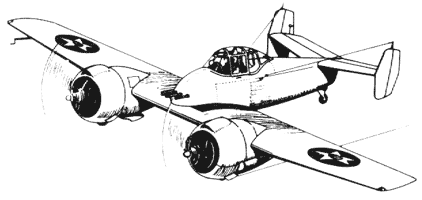
The proposed armament was two 23mm Madsen cannons. The Navy placed an order for one prototype, designated the XF5F-1, on June 30, 1938. The prototype took to the air for the first time on April Fools day, 1940. The XF5F-1 demonstrated good flight performance, attaining a maximum speed of 383 mph at 20,000 feet. Its rate of climb easily exceeded that of its sibling, the F4F Wildcat. Despite continued modifications, Grumman failed to gain any production orders from the Navy. A different version with a longer nose and tricycle landing gear was built for the Army Air Corps under the designation XP-50, though only one prototype was built. However, the investment of time and money devoted to the XF5F-1 and the XP-50 was not wasted. These aircraft provided a base of data which was applied to Grumman's new G-51 proposal, which was to eventually became the F7F Tigercat. Meanwhile, the XF5F-1 continued.
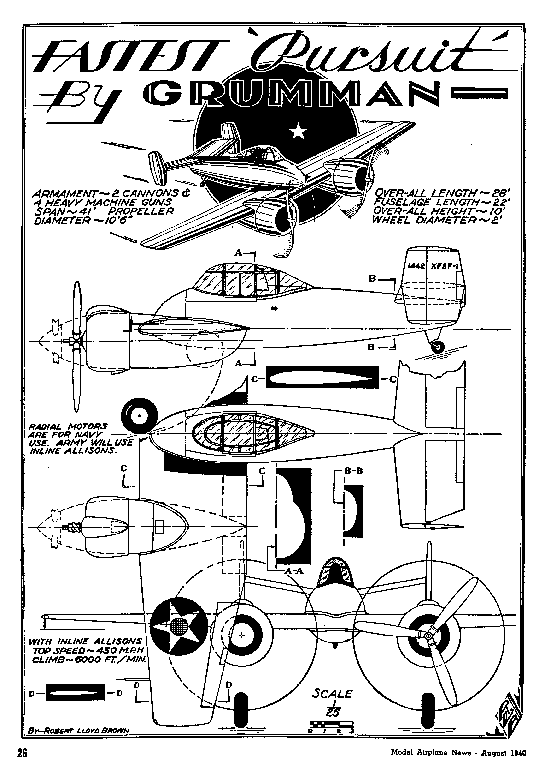
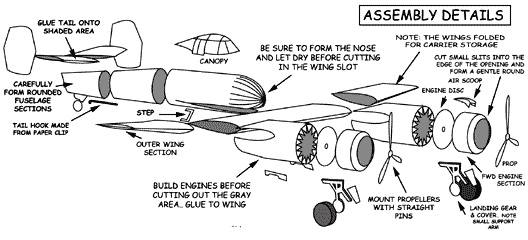
The first monoplane fighter had yet to enter carrier service and the Long Island factory was still struggling to turn the F4F into the effective fighting machine it later became, when Grumman took a great step forward with a proposal to the Bureau of Aeronautics for a twin-engine carrier-based monoplane fighter. The design was considered somewhat daringly ahead of its time but was favourably received and on June 30,1938 a prototype was ordered. the XF5F-1. The plane had an unorthodox configuration: its low-wing was sited so that the forward fuselage began aft of the leading-edge.
Two bulky under wing nacelles housed the two 1,200hp Wright XR-1820-40/42 Cyclone engines, driving three bladed contra-rotating propellers. The tail assembly had twin fins,the landing gear wheels retracted into the engine nacelles.
The wings folded for easy stowage on the carrier flight deck. B.A. Gilles was the test pilot for the XF5F-1's maiden flight on April 1, 1940 and the test program lasted until February 1941 when it was decided that the prototype would have to undergo major modifications.
In an attempt to solve the overheating problems which had plagued the engines, the nacelles were lengthened and spinners were fitted to the propellers; the fuselage was stretched and four .50in machine guns installed in the nose which was sited further forward in front of the leading-edge of the wing.
The pilot was seated lower down in the cockpit. This much-changed XF5F-1 resumed test-flights on July 15, that same year only to be further modified in October.
Apart from a structural weakness in the landing gear, the problem of pilot visibility had not yet been resolved. Testing began once more in January 1942 but with the sole aim of collecting data which could prove useful for the XF7F-1 project, the new ,twin-engine fighter which Grumman had already started to design.
By 1944 the XF5F-1 had made 211 flights and clocked up 155.7 flying hours. The XP-50, a version planned for the USAAF, had a more fleeting existence; the prototype was ordered on November 25, 1939 , powered by two Wright R-1820-67/69 engines with turbo-supercharger identical to the XF5F-1, except for a lengthened nose to accommodate 2 20mm cannons, the XP-50 had only completed 20 hours flying time when on May 14, l 941 a turbo-supercharger exploded in flight, **the aircraft caught fire and its destruction led to the project being abandoned.
** (Thanks to Cam Martin 3/03) They learned that it was the turbocharger that caused the crash of the XP-50 only because a boy fishing off City Island New York saw the explosion overhead, then later a large splash in the water off shore. He waited until low tide, recovered the turbine wheel and took it to the New York Daily News newspaper, who contacted Grumman...The bolts had stretched, allowing the turbine wheel halves to separate...
P 65 "Ironworks" by Terry Treadwell.
Grumman F5F-1 Skyrocket
The Blackhawk's flew the Skyrocket from their first appearance in 1941 until about 1949. The unique design of the Skyrocket with its fuselage that started about a foot back from the leading edge of its wing made it easily recognizable and it became amazingly well known for a plane that never went into production. However, Charles Cuidera, the artist who created the Blackhawk's, did not feel at all bound by Grumman's design. He immediately replaced the XF5F-1's rotary engines with generic inline engines and then proceeded to replace the twin tail with a more conventional, single tail. See Military No. 2.
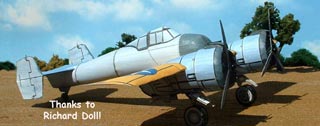
The actual XF5F-1 Skyrocket was built by Grumman under a Navy contract for a high performance, twin engine, single-seat fighter. There was only one XF5F-1 built. It is common knowledge in the comics community that the F5F-1 was a failure but it was used for the Blackhawk's because it looked cool. It does have a unique look, but it was not the failure commonly believed.
The F5F-1's test pilot, "Connie" Converse, in 1980 recalled "the flying qualities for the XF5F-1 were good overall. The counter-rotating props were a nice feature, virtually eliminating the torque effect on takeoff ... single-engine performance was good, rudder forces tended to be high in single engine configuration. Spin recovery was positive but elevator forces required for recovery were unusually high.
All acrobatics were easily performed, and of course forward visibility was excellent." In 1941, Navy pilots tested the Skyrocket in a fly-off against the Spitfire, Hurricane, P-40, P-39, XFL-1 Airabonita, XF4U, F4F, and F2A. LDCR Crommelin, in charge of the test, stated in a 1985 letter to George Skurla, Grumman president, "for instance, I remember testing the XF5F against the XF4U on climb to the 10.000 foot level. I pulled away from the Corsair so fast I thought he was having engine trouble.
The F5F was a carrier pilot's dream, as opposite rotating propellers eliminated all torque and you had no large engine up front to look around to see the LSO (landing signal officer) ... The analysis of all the data definitely favored the F5F, and the Spitfire came in a distant second. ..ADM Towers told me that securing spare parts ... and other particulars which compounded the difficulty of building the twin-engine fighter, had ruled out the Skyrocket and that the Bureau had settled on the Wildcat for mass production."2 It is true that the Skyrocket had some developmental problems, but no more than any other aircraft of similar radical design. The Navy was also concerned that the F5F was overweight, but this was more a problem of their expectations than reality. The Navy was used to comparatively small, light biplanes. The newer, high performance monoplanes were all overweight by that standard. The F4U Corsair weighed more than the F5F, even though it had a single engine compared to the Skyrocket's two.
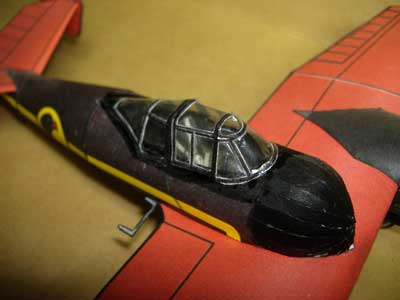 |
|---|
| "Clear Cabin" Grumman XF5F Blackhawk submitted by Bob Martin. Thanks Bob! |
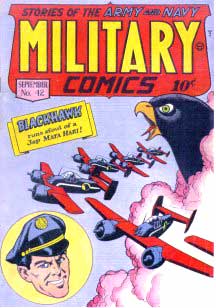 |
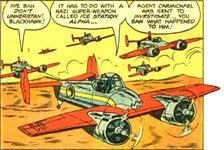 |
|---|
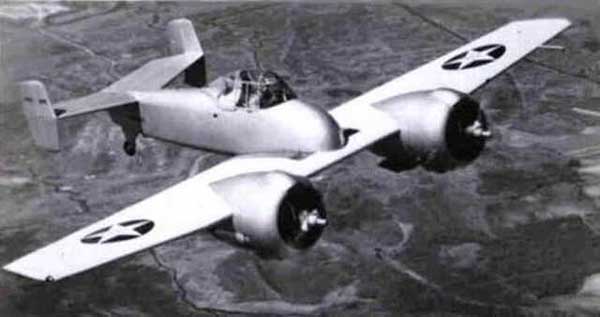
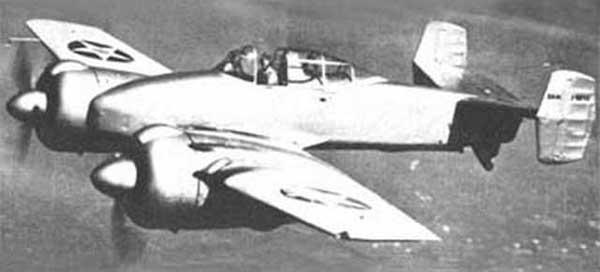
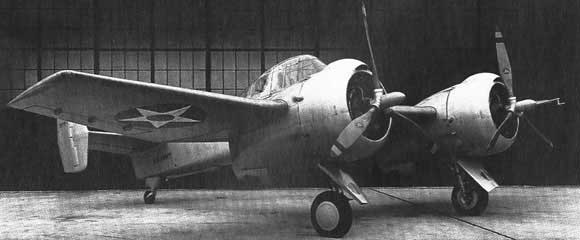
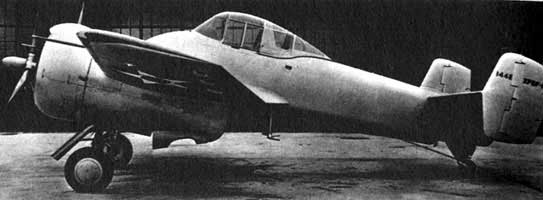
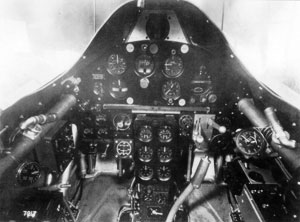 |
|---|
| The cockpit of the Grumman XF5F Skyrocket. |
Specifications
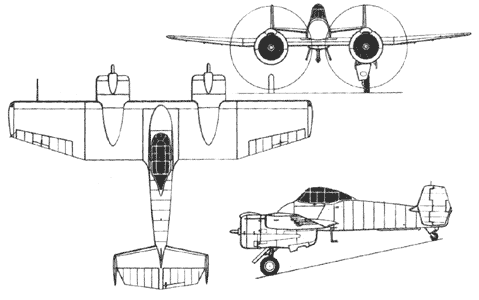 |
Length: 28 ft 9 in Wingspan: 42 ft Height: 11 ft 4 in Wing area: 303.5 ft² Empty weight: 8,107 lb Loaded weight: 10,138 lb Max takeoff weight: 10,892 lb Powerplant: 2× Wright XR-1820-40/42 Cyclone nine cylinder radial air-cooled engine, 1,200 hp eachPerformance Maximum speed: 383 mph at sea level Range: 1,200 mi Service ceiling: 33,000 ft Rate of climb: 4,000 ft/minArmament 4 × 0.5 in (12.7 mm) machine guns 2 × 165 lb bombs |
|---|